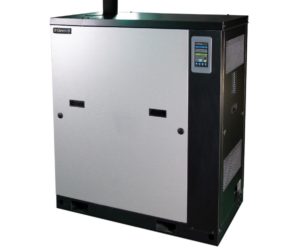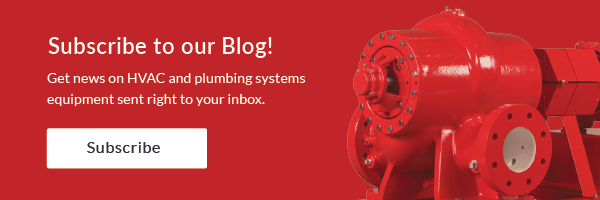 Proper humidification in buildings is critical in the fight to reduce the spread of air-borne viruses. We have known this for years, but the pandemic has heightened the attention to humidity control and air quality. Many commercial humidifiers are electric. Which type of electric humidifier is the correct choice for your client.
Proper humidification in buildings is critical in the fight to reduce the spread of air-borne viruses. We have known this for years, but the pandemic has heightened the attention to humidity control and air quality. Many commercial humidifiers are electric. Which type of electric humidifier is the correct choice for your client.
We have seen many articles published over the last year indicating the target for building humidity is 40% RH. A short publication, ASHRAE Position Document on Infectious Aerosols is available for your review through the driSteem Humidification University website.
Immersed Electrode Conductive Humidifiers
The two main technologies used in commercial and institutional electric humidifiers is conductive and resistive. Conductive humidifiers use a replaceable cylinder which is often referred to as a jug. The jug is filled with water and two electrodes use the conductance of the water to produce current from one probe to another. This current causes the heat used to boil the water into steam. The steam can be dispersed in a duct or directly into the space.
Water is added automatically to maintain the steam capacity. As the water boils away, the particulate or mineral residue in the water remain behind in the water that is left. With each cycle, the solids concentration becomes greater. The term used in water treatment is cycles of concentration. Once the conductivity gets too high, the unit is drained and filled with fresh water to start the cycle again.
At some point, the residue build-up is too great and the cylinder or jug must be replaced. The jugs are easy to replace and require little or no technical skill. The humidifier will not operate until the cylinder is replaced.
These humidifiers will maintain the RH to ±3%. driSteem has the model XT with capacities from 5 to 287 pounds per hour (PPH). This brand comes with a solid-state digital controller with interoperability through Modbus, BACnet, or LonTalk.
Resistive Heating Element Humidifiers
Resistive type humidifiers consist of a non-pressurized stainless steel water tank containing submerged heating elements that boil water into steam. The elements are Incoloy alloy like the better electric boilers and water heaters. Resistive humidifiers disperse steam through ductwork with dispersion tubes or panels, depending on the dispersion method chosen. Some versions have a fan unit for dispersing steam directly into the space, rather than into the ductwork.
Resistive humidifiers may use city water or RO water. Depending on the brand, they will use probes or float switches to maintain the level of water in the tank. There are no cylinders or jugs to replace but there is some suggested maintenance. The driSteem RTS humidifier is equipped with a skimming, draining and flushing process for managing the residue left as the water boils away. Scale management helps increase the time between cleaning of the tank.
These humidifiers will maintain the RH to ±1%. driSteem has the model RTS with capacities from 5 to 324 pounds per hour (PPH). You may link up to 8 units in parallel for more capacity. This brand comes with a solid-state relay (SSR) digital controller with interoperability through Modbus, BACnet, or LonTalk.
Relative First Cost and Life Cost of Ownership
First cost always depends on the model and options required. In general, the electrode cylinder style of humidifier will be about half of the cost of the resistive type of humidifier. As an example, I compared two 150 PPH humidifiers with the same distribution panels. The XT model was about $6,000 and the RTS model was about $9,800.
The cylinder replacement will be a regular maintenance cost, but the payback will be many years. So why would you pay the additional money for the resistive unit? We will address this in the next R. L. Deppmann Monday Morning Minutes.


